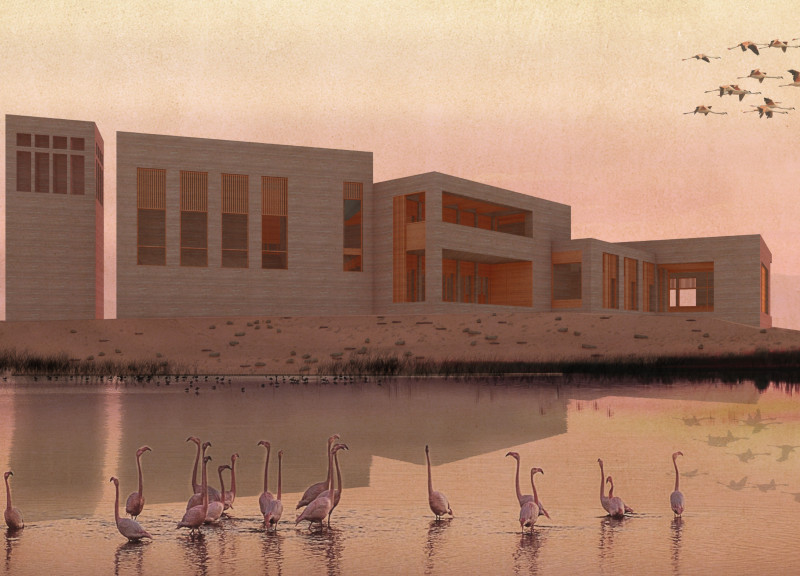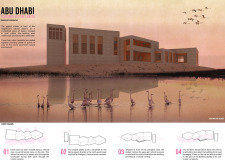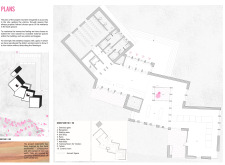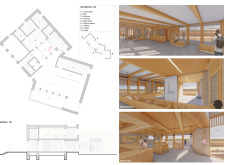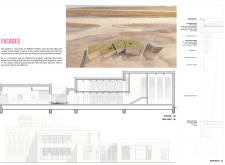5 key facts about this project
The Abu Dhabi Flamingo Visitor Center Rammed Earth Observatory is designed to fit within a natural reserve that is home to various species of birds, including flamingos. The structure serves both an educational and recreational purpose, offering visitors opportunities to learn about the local ecosystem. The design incorporates four cubic forms, strategically arranged to connect with the landscape while providing visual access to the wetlands.
Design Concept
The main concept revolves around the four cubic monoliths, each positioned at different angles. This arrangement allows visitors to experience multiple perspectives of the surrounding environment. As people navigate through the space, they are constantly reminded of the wetlands outside, fostering an ongoing relationship between the architecture and its natural context.
Materiality
Rammed earth is the primary building material, reflecting a traditional method of construction relevant to the region's history. This choice supports the structure's environmental performance, especially its ability to regulate temperature. The colors of the walls come from different types of earth sourced locally, enhancing the connection between the building and the landscape around it.
Spatial Organization
The Visitor Center is laid out to guide visitors on a journey through its spaces, blending inside and outside areas. Exterior features like patios and loggias encourage interaction with the natural surroundings. The layout includes spaces such as a reception area, exhibition sections, and facilities to serve both visitors and staff, creating a well-rounded experience.
Design Detailing
A prominent feature is the northwest tower, inspired by traditional wind-catchers known as Badgirs, which facilitate natural cooling by capturing the wind. The northern facade is mostly solid to protect against sand intrusion, yet it includes carefully placed openings that frame views of the wetlands. This design detail highlights the cultural aspect of the building while enriching the visitor experience, especially in the café where panoramic views reveal the habitat of the flamingos.


